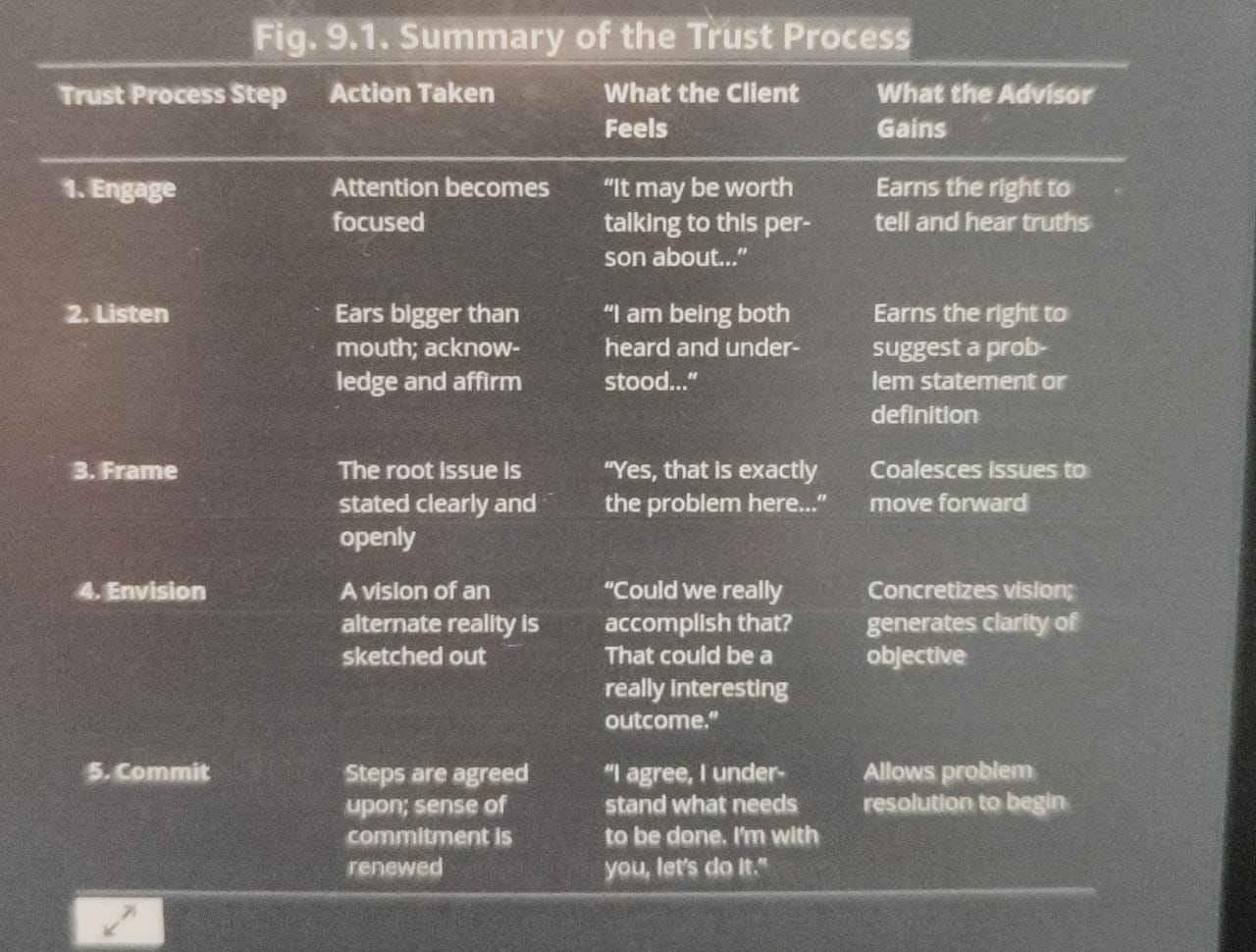Suggested from a friend, who really love about his job as a professional advisor, and much more older than me, so I read this book. It took me one and half month to finish, at the first I don't really excited about this book, but because I plan to be a professional advisor in the future, so push my self was logic option.
Overall, this book so practical. It construct the idea using examples and real cases, those are really mind-blowing for me.
So here my notes about this book, so in the future, if I need something about this book, I just open this post. Perhaps, it can be useful for you also.
 |
| Trust Equation |
- most people is that we don't like to be told what to do
- The client may even have sought you out because you have seen this problem a hundred times. Still, they will not fully accept your advice until they feel that you have understood their unique situation
- Give me reasons, not jus instructions!
- If we are trying to convince Mom or Dad to do something, we are more likely to find the right words to convey our point so that it comes across with great respect, and any implied critique is softened as much as possible.
- Your actions speak so loudly, I cannot hear what you are saying
- As Dale Carnegie said, "The only way to influence someone is to find out what they want, and show them how to get it" Notice that Carnegie did not say "the best way to influence but "the only way"!
- The most common failure in building trust is the lack of intimacy
- Summary of the Trust Process
- the client so that he or she will open up to us, in particular. Think about your experiences. To Whom do you open up? Who opens up to you?
- Talk to them as if they are a new friend, not an old friend.
- Our desire to be heard also flows from our need for respect, empathy, and involvement. To be listened to, without judgement, is taken by other as a sign of respect - a sign that is often then reciprocated. The trusted advisor recognizes this, and always ensures that the self-esteem of the client is protected.
- In many advisory situation, an accurate problem statement is more than halfway to the solution.
- If our clients aren't committed to doing what it takes to solve the problem, they won't benefit from our advice and we will have failed! (even if everything we did was right!)
- A central part of building commitment to act is carefully managing the client's expectations about what is and is not going to happen in solving problem
- The client's fear is your opportunity
- no trust without risk
- There are two of kinds of risks: The risk of doing a wrong thing, and the risk of not doing a right thing. Most business people are paralyzed by the fear of the first kind of risk, often to the extent of unintentionally committing the second kind.
- Fear of what? here we can generate quite a list. It would include fear of:
- not having answer
- not being able to get the right answer quickly
- having the wrong answer
- committing some social faux pas
- looking confused
- not knowing hot wo respond
- having missed some information
- revealing some ignorance
- misdiagnosing
- And the root reason for that is self-centered fear; fear of losing what we have, or of not getting what we want.
- the goal is not "to get the sale" it is to help the client
- Great trusted advisors stay in regular contact with their clients, even if they are not currently working on a project for that client.
Building Trust: The foundation of any successful client-advisor relationship is trust. You need to build trust with your clients by being honest, transparent, and reliable in your communication and actions.
Client focus: Trusted advisors always put their clients' needs first. Your focus should be on understanding your client's goals and objectives, and aligning your advice and recommendations accordingly.
Listening and empathy: To build strong relationships with your clients, you must be an active listener and demonstrate empathy. Listen carefully to your client's concerns, questions, and ideas, and try to understand their perspective before providing any advice.
Collaboration and communication: Effective collaboration and communication are key components of being a trusted advisor. You should work with your clients as a team and communicate regularly and clearly to ensure you're both on the same page.
Continuous improvement: Trusted advisors are always looking for ways to improve their skills and knowledge. You should continuously invest in your education, stay up-to-date with the latest trends and best practices, and seek feedback from your clients to ensure you're providing the best possible service.



0 Response to "Book Review: The Trusted Adivsor"
Posting Komentar